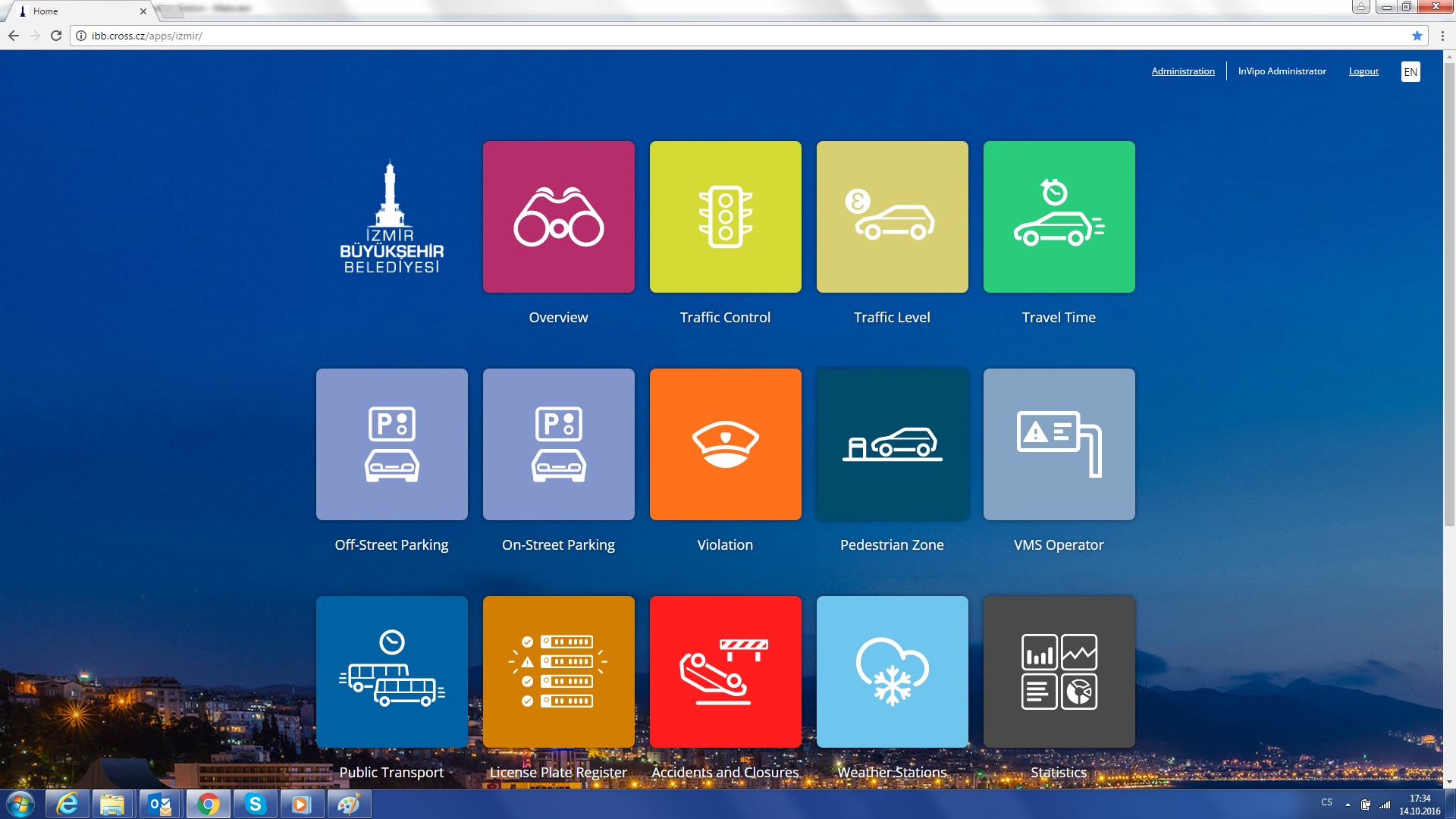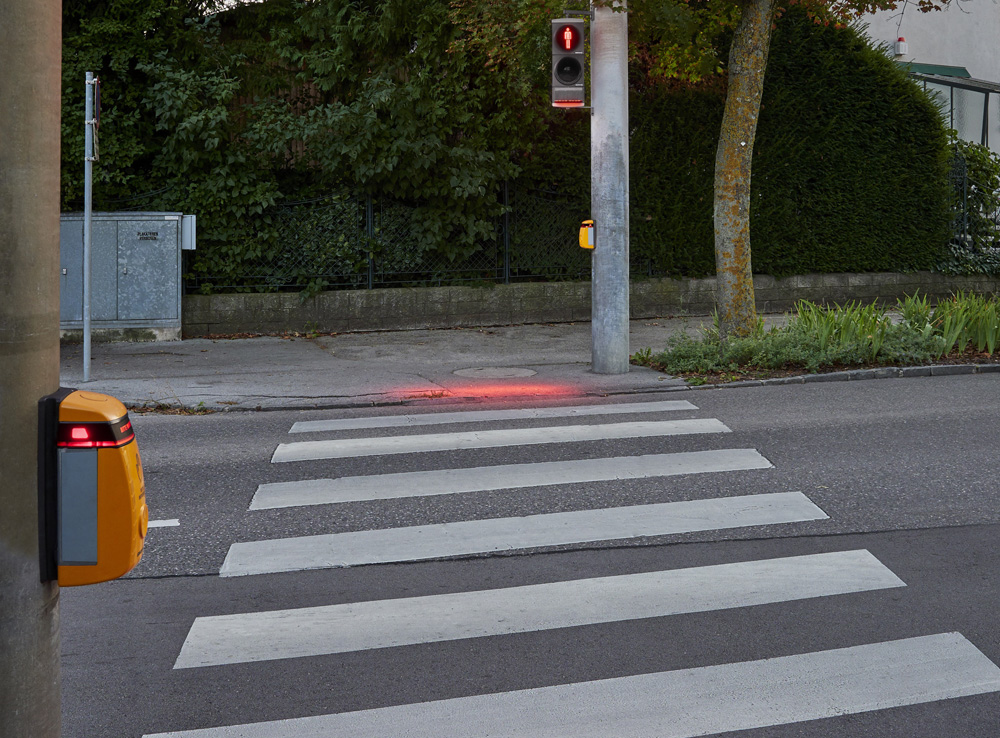
All encompassing, city-wide transport monitoring and control systems are beginning to make their way onto the market, as Colin Sowman hears.
The futuristic vision of cities where everything is connected and operated with maximum efficiency by a gigantic computer remains a distant prospect but related sectors and services are beginning to coalesce: transport monitoring and control for instance.
Traditionally, cities have had a multitude of traffic monitoring, control and enforcement systems – often in distinct activities and/or separate areas. There are drawbacks to this way of working when, for example, a congestion problem solved in one area simply moves to the next area. The mixing of statically timed and adaptive traffic lights is a case in point, as is a problem on the metro leading to increased demand on buses. Now, however, with the latest generation of technology, cities can have a single over-arching system handling all feeds from and to the monitoring and control (and potentially even enforcement) systems. Not only does this single joined-up system approach allow a complete city-wide overview, it also allows operators to drill-down from that overview to view, check and adjust individual component parts of the network.
The first to come to notice was Cross Zlin with its InVipo system which was the overall winner in this year’s Intertraffic Innovation Awards. Based in the Czech Republic, the company is best known for producing traffic lights, signs and control systems. It describes InVipo as a smart integration and visualisation platform that can be defined as a middleware between on-field technology and end users and operates through a dashboard allowing an over-view or individual services to be selected.
Quite a mouthful, but in effect it collects all the outputs (traffic monitoring and control, parking, VMS signals, public transport and weather stations) and displays the information on a digital city-wide map.
Notifications for incidents, congestion, faults at traffic lights, dead cameras and so on, can all be prioritised so that the operator is alerted to the most pressing item(s). Once an incident or fault is detected and flagged up, the operator can (depending on their clearance level) drill down into the system to do a re-boot, change the timings of traffic lights, pan or tilt cameras and so on.
InVipo has been piloted in the Turkish city of Izmir and was part of a major upgrade which included more than 250 new traffic light controllers (with traffic detection) and new traffic frameworks for adaptive control.
Like-for-like measurements in sections where equipment was already installed to provide baseline figures show that travel times were reduced by between 30% to 65%. A prime example is the main city road between city centre and airport where at peak periods the travel time has been reduced from 44 minutes to 21 by the installation of a new adaptive control system. Off-peak saving are also significant – a 36% cut to 10 minutes.
But the scope of the system does not stop there as Izmir has included the monitoring of on-street parking in InVipo.
The city has more than 1,500 on-street parking spaces fitted with parking sensors (which will eventually be expanded to 2,000). Occupation is monitored in real-time via InVipo with each space given a status: green indicates unoccupied, orange is occupied (and includes parking duration) while occupied with overstay is displayed in red.
The city police can access InVipo online to monitor over-stayers and process penalties. The next step will be a mobile app for drivers, a web portal and on-street displays with navigation to unoccupied parking places. Furthermore, the data obtained is available for the municipality to produce reports and statistics for parking managers as they prepare a new strategy and rules for on-street parking.
The city has more than 20 variable message displays which can show travel times, free parking places (currently for on-street parking only but this will be implemented for on-street too once all 2,000 bays are fitted with sensors) or other information. Displays can be individually adjusted and monitored through InVipo and the information from 11 (eventually 30) road weather stations also feeds into the system meaning actual weather data is displayed on the map.
The system is pre-programmed to monitor and manage incidents and road closures. Again, this is not confined to the immediate vicinity of the incident, but across the city and can be used to display relevant traffic information on the variable message signs and/or change signal timings to alleviate congestion caused by the incident.
Izmir also employs automated speed, red light, parking overstay and over-height enforcement and currently the number of traffic violation detected is huge – more than 20,000 each day. As all these systems are channelled through InVipo, both the municipality and city police have all the data, detailed information and photo documentation needed to prosecute violators, plus the system links to the register of licence plates. The police department is currently certifying the system and once this is completed prosecutions will start and the number of violations is expected to reduce significantly.
Cross had supplied a large proportion of Izmir’s traffic control equipment which simplifies the integration into InVipo. However the system can take in-feeds from any make of equipment provided it uses a standard protocol. To emphasise this breath of connectivity, Cross has founded an independent software subsidiary called Incinity to market the InVipo system.
Also offering a ‘smart-city-in-a-box’ system is
As with InVipo, Cubic can integrate the output from existing detection and monitoring systems (including cameras, environmental monitors and connected car data) into STM to provide a complete overview of the network of travel modes within a city. Within STM there is also the option to deploy roadside speed and red light cameras and the nature of the configuration also allows for additional and future transport management inputs to be accommodated.
Again, all the information is displayed on a single integrated map through which control room staff get an overview of all transport modes and from which they can control signals, variable message signs and traveller information systems and operate dynamic lanes controls. This integrated view allows strategic management across multiple modes to cope with incidents, congestion and re-occurring problems.
Individual functions such as tram, bus, taxi, ferry and tunnel management can be carried out using STM and it can be connected to a smart ticketing system for integrated traveller payment. Beyond the user interface, the output can be used to feed public websites and the data is then stored to enable city-wide analysis of transport demand to assist decision making and planning.
Speaking in Glasgow at the launch of NextTraffic, Cubic Transportation Systems’ president, Matthew Cole, told ITS International: “We see our role as providing authorities with the technology stack and connectivity and allowing government to figure out the policies they want to pursue.”
He sees much of the process becoming increasingly automated, saying: “The number of sensors on transportation systems is growing exponentially and much of the decision-making process can be derived from machine learning. All that can be built into systems and automated to give operators a choice of actions along with the cause, effect and timing of each but that requires a fundamentally different kind of technology.”
STM is one of Cubic’s growing number of cloud-based applications in line with the company’s flexible architecture offer. For its cloud-based systems, Cubic is increasingly working with Microsoft which has its own ‘smart city’ system called Citynext that encompasses many other government services, and, according to Cole, makes it a “natural fit” with Cubic’s offerings.
As might be expected, Siemens can also provide ‘smart city’ levels of overview and drill-down, tiered access and all the other functionality an authority may wish. However, rather than offering a particular stand-alone product it is more a case of adding functionality and inputs from additional or outlying sensors to an existing Siemens system. This can extend beyond road traffic to include parking, trams and other modes. “If a connected device uses an open protocol, or if we can have access to that protocol, then we can operate, check and adjust it,” says the company’s head of system engineering, Michael Gaertner.
The company is also increasingly moving such operations to the cloud and uses the operator’s login to set the level of access he or she is allowed. Individual systems report through a dashboard display and warnings and alerts can be prioritised. Response plans can be pre-programmed and all records stored for analysis.
According to Gaertner, the capital cost may be higher than individual or regional systems, but the running costs are similar and the additional outlay is more than repaid in reduced travel times. So, in the transport sector at least, the ‘Smart City may be much closer than you think.











